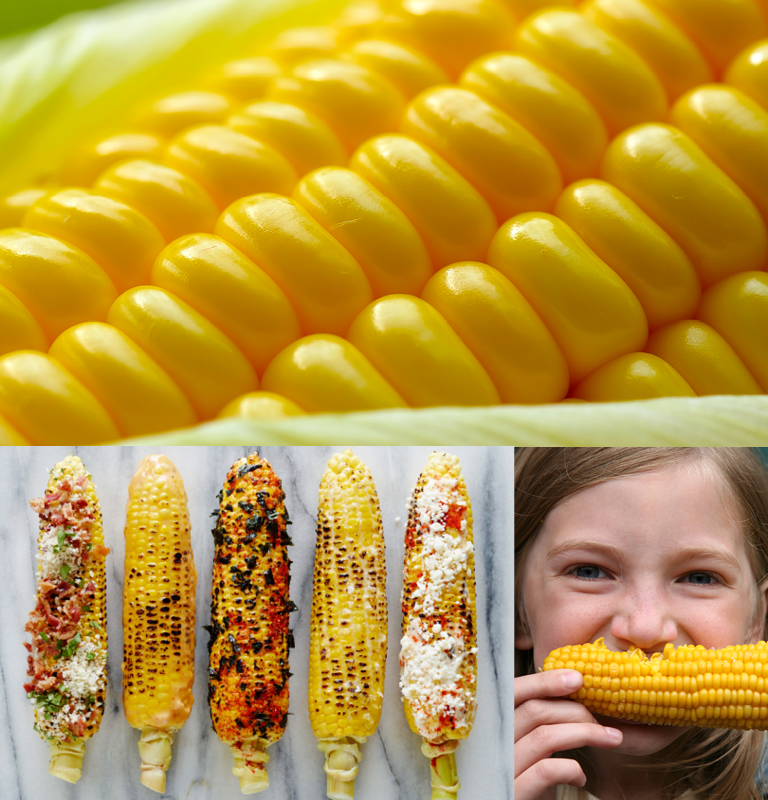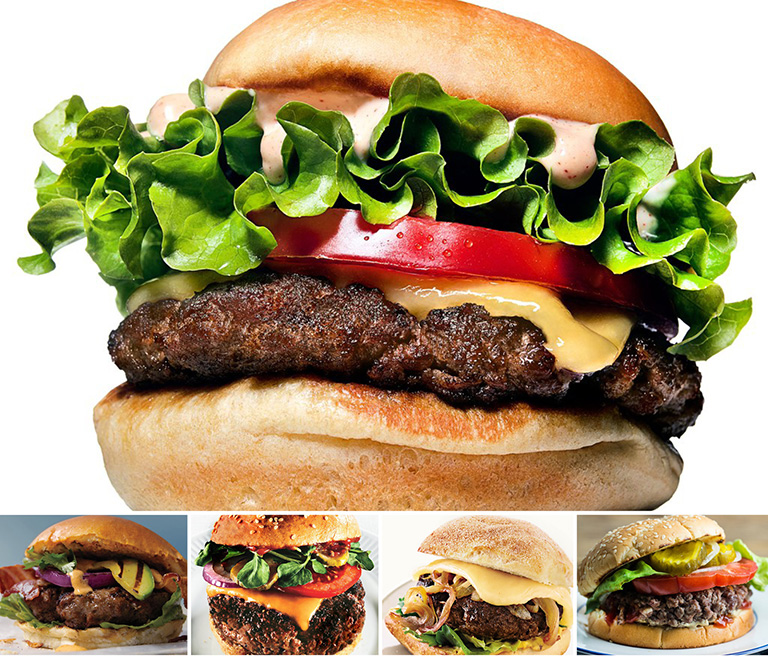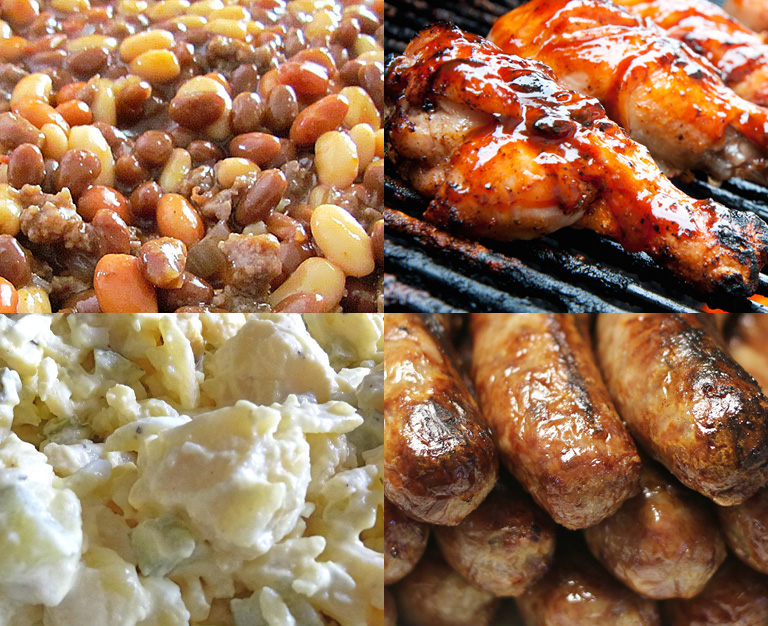Oh So Sweet
Lower left photo: Go to the Food Network for classic and some quick and easy corn on the cob reinventions. (l to r) Bacon, sweet & spicy, Japanese, classic & Mexican. Yum!
Nothing signifies the height of summer like biting into a sweet, succulent (and if possible – fresh picked from the field) ear of corn. It’s tough not to get excited when traveling outside the city and seeing farm after farm of fresh corn, or even better, stopping at a roadside stand filled with piles of cut corn and fresh vegetables. So, in KHT Style, here are just some things to know about corn.
While the normal method of eating corn on the cob is to dunk it in boiling water, slather it with butter and top it with a little salt, some farmers insist fresh is best. Next time, grab an ear, peel back the husk and bite away – you’ll be amazed at the fresh flavor.
Other than eating corn raw or boiled, some people like to soak the corn in water for a bit and put them on the grill. When the husk turns brown, it’s done. You can also grill corn with the husk removed, creating a golden brown on the kernels. Some people even fry corn while still on the cob, which caramelizes it and give it a smooth flavor. The easiest way is to put corn, still in the husk, into the microwave for three minutes, pull back the husk, roll it in butter or margarine, and top it with coarse or table salt.
When cooking corn, don’t add salt to the boiling water, because salt toughens the kernels. As an alternative to butter, rub with wedges of lemon or lime. Instead of salt, sprinkle with cayenne, dill or other spices and herbs. You can also add corn kernels to rice and bean dishes, soups, salads, even pancakes. Frozen and canned are just as nutritious as fresh—just watch out for extra sodium and high-fat sauces.
Sweet corn is technically a grain, not a vegetable, and has undergone radical transformation since the Supersweet hybrid was introduced in the late 70’s. Sugar in corn starts to turn to starch as soon as the ear is separated from the stalk, losing nearly half of its sweetness within 12 hours of picking if not chilled. Hybrids have changed that, extending shelf life and allowing corn to be shipped longer distances.
Corn is a high-carbohydrate food with lots of fiber, some protein, B vitamins (e.g., thiamin and folate), a little vitamin C and a handful of minerals. Treating corn with lime (as in tortillas) makes certain amino acids and niacin more available to the body. Yellow corn contains some beta carotene and is rich in lutein and zeaxanthin—which may help keep eyes healthy and possibly protect against cataracts and age-related macular degeneration. Corn contains more calories than most veggies: 175 in a cup.
The typical harvest time for sweet corn in Northeast Ohio is mid-July through early September. Corn typically takes 60-80 days to produce a crop. Many farms will plant multiple crops to take advantage of the weather and growing season. Corn harvested later in the season is usually better than the early ears, as the ears are bigger and at its sweetest point.
Corn is planted in multiple waves throughout the season and is continuously harvested. Ideal growing conditions include temperatures between 68 and 73 degrees – but corn can survive temperatures as low as 32 and as high as 112 for short periods. A steady supply of moisture is essential. This year, due to the lack of rain in late June and early July, the old adage of “knee high by the Fourth of July” didn’t quite make it. To stay on track, a good long soaking is needed.
Corn stalks grow seven to 10 feet tall and each cob has an average of 800 kernels, with one strand of silk for each kernel. Each cob has an even number of rows. Popular bicolor corn is typically sweeter than single color varieties, which can be coarser and chewier.
Ohio is the sixth largest producer of sweet corn in the U.S., and the U.S. is ranked first worldwide. The most popular variety is yellow and white, often referred to as “honey and cream”. The taste of corn, much like a good wine, changes its taste almost every day, depending on the amount of rain, temperature and the soil. Some farmers give the corn a cold water bath as soon as they are harvested to capture the flavor and sustain freshness during delivery.
Growing techniques vary. Some farmers use black, peat-based “muck soil”, much like a drained swamp, to retain moisture and limit irrigation, while others use more traditional planting and watering.
The best way to tell if corn is fresh is not to pull back the husk, but to look at the stalk end. If the cut is brown and dry, it is past its prime. The cut should still be moist and white, or just a little brown on the edges. When you bring it home, place it in the refrigerator where it will retain most of its flavor for up to five days.
The best way to preserve that summertime flavor all year round is by freezing. A good method is to toss the ears of corn into boiling water for a few minutes and then plunge them into the sink filled with cold water. Remove the kernels with a knife, and then turn it over and run the flat end blade down the cob to squeeze out the juice – it makes a difference – add some butter and seal in freezer bags. Another good trick is to place the cob in the center of a bunt cake pan, and scrape the kernels off with a knife. The pan catches the falling kernels and don’t go rolling all over the counter.
Special thanks to Christine Klecic of Mimi newspaper and University of Berkley Wellness Center for insights in helping compose this post.







